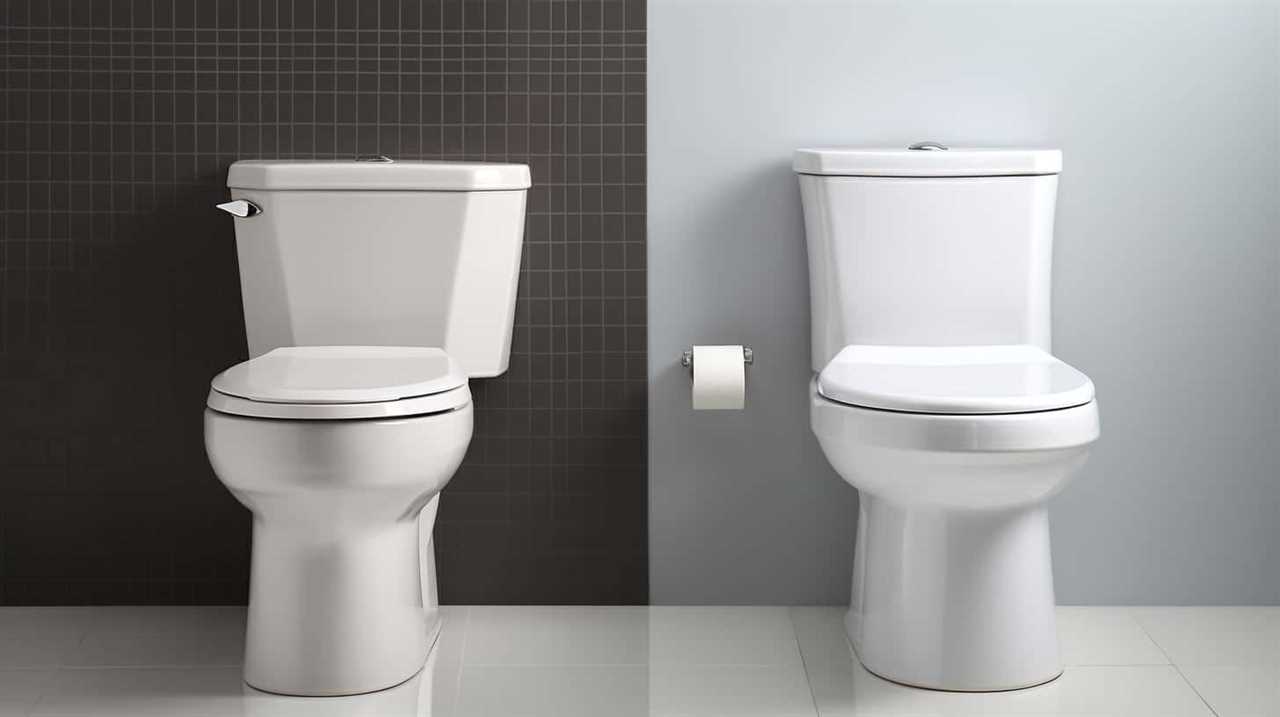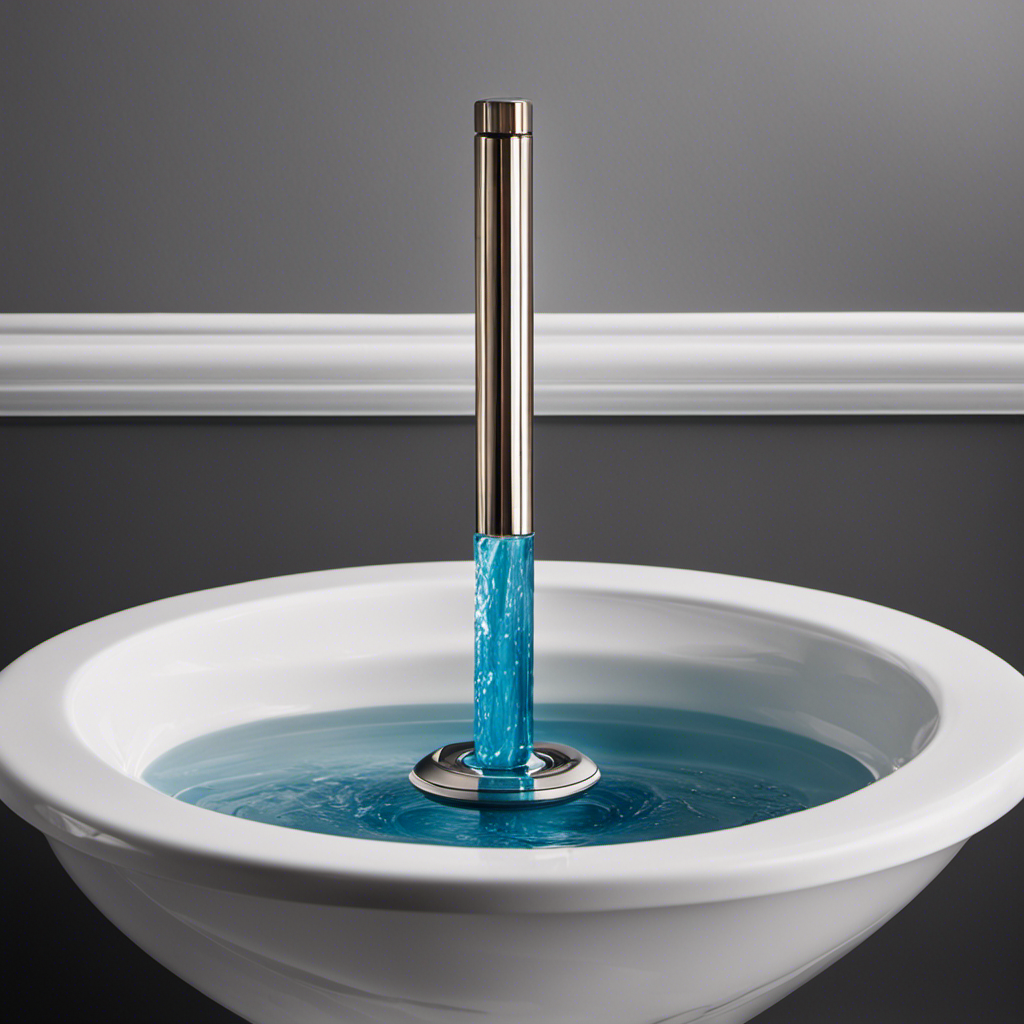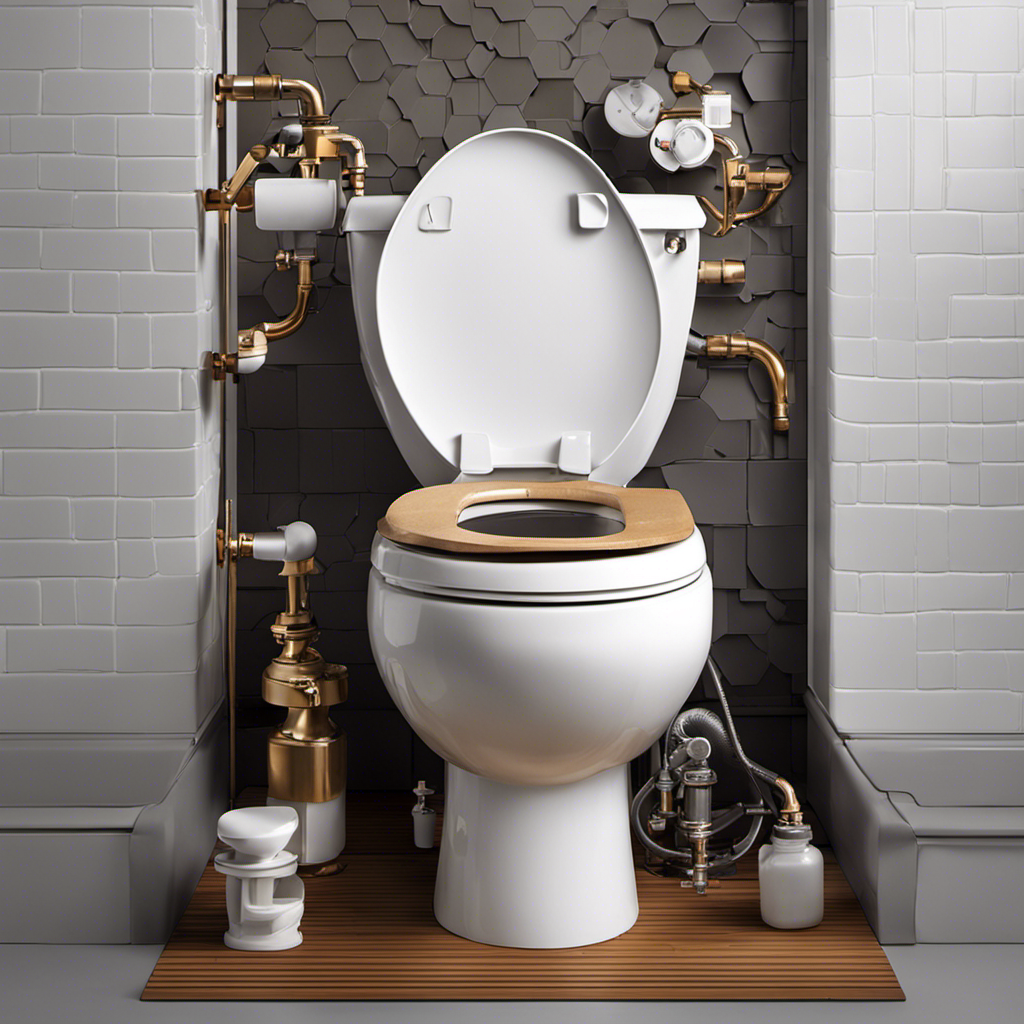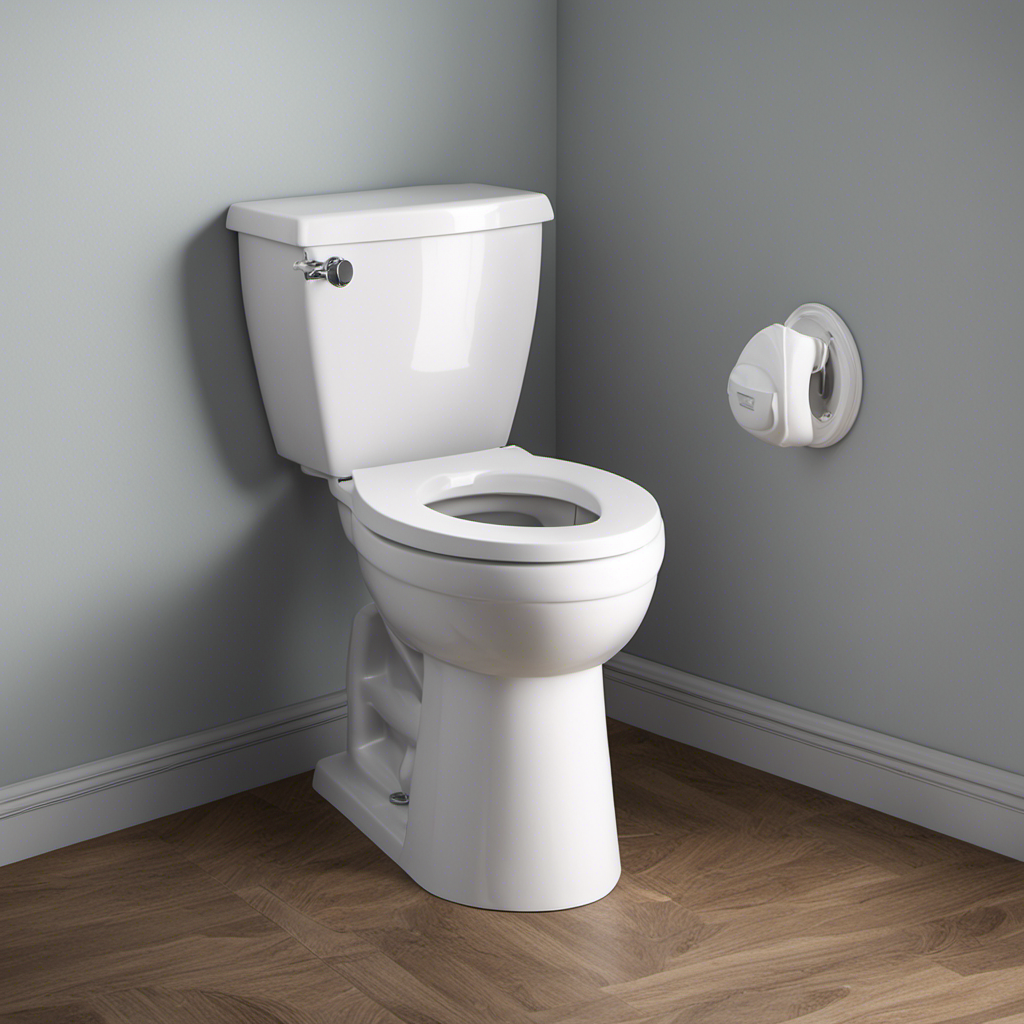Have you ever felt the sudden panic of unintentionally flushing tissue down the toilet? It’s a common experience for many of us.
But what actually happens when that innocent tissue disappears into the abyss? In this article, we’ll delve into the potential clogs it can cause, the impact on your plumbing system, and the risks of a toilet backup.
We’ll also provide you with methods to prevent tissue flushing accidents and solutions for dealing with the aftermath.
So, let’s master the art of avoiding this common mishap!
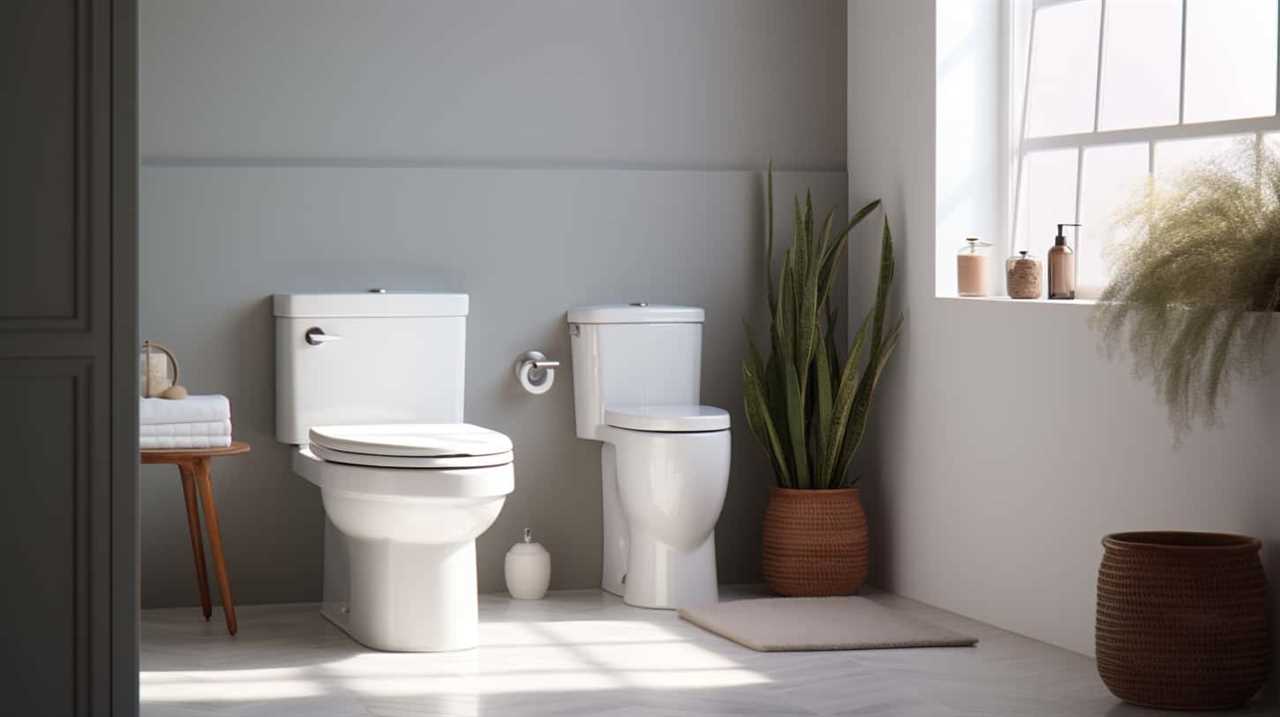
Key Takeaways
- Flushing tissues can cause toilet clogs and plumbing damage.
- Tissues do not dissolve easily in water like toilet paper.
- Flushed tissues can lead to blockages and damage in the plumbing system.
- Proper disposal of tissues in the trash bin can prevent clogs and backups.
Potential Clogs Caused by Flushed Tissues
One of the main concerns when accidentally flushing a tissue down the toilet is the potential for clogs in our plumbing system.
Flushed tissues can easily cause toilet clogs, leading to potential plumbing damage. Tissues are designed to be sturdy and absorbent, making them prone to swelling and blocking the pipes.
When a tissue gets stuck, it can create a blockage that restricts the flow of water and waste. This can result in a backed-up toilet, slow drainage, or even a complete plumbing system failure.
It’s crucial to address a toilet clog caused by flushed tissues promptly to prevent further damage. Seeking professional assistance or using a plunger can help dislodge the tissue and restore proper plumbing function.

Impact on Plumbing System
Accidentally flushing a tissue down the toilet can have a significant impact on our plumbing system, particularly in terms of potential clogs and damage. Tissues are not designed to dissolve easily in water like toilet paper, which can lead to blockages in the pipes. This can cause slow drains, backups, and even sewage overflows if left untreated. Additionally, the accumulation of flushed tissues can put extra strain on the plumbing system, leading to potential damage and costly repairs.
To emphasize the importance of proper disposal, here is a comparison between toilet paper and tissue:
| Toilet Paper | Tissue |
|---|---|
| Specifically designed to dissolve quickly in water | Not designed to dissolve easily in water |
| Breaks down into small pieces when flushed | Can clump together and cause blockages |
| Environmentally friendly option | May have a negative environmental impact |
To avoid these plumbing issues and minimize the environmental impact, it is advisable to stick to using toilet paper or explore alternative options such as bidets or eco-friendly toilet paper alternatives.
Risks of Toilet Backup
What are the risks of flushing a tissue down the toilet and causing a backup in our plumbing system?

- Toilet overflow: Flushing a tissue down the toilet can lead to a backup, causing the toilet to overflow. This can result in water damage to the bathroom and surrounding areas.
- Damage to bathroom flooring: When the toilet overflows, the excess water can seep into the bathroom flooring, causing it to become saturated and potentially damaged.
- Structural issues: A toilet backup can put additional strain on the plumbing system, potentially leading to leaks or pipe damage.
- Health hazards: Standing water from a toilet overflow can create a breeding ground for bacteria and other pathogens, posing a risk to the health of those in the vicinity.
- Costly repairs: Fixing the damage caused by a toilet backup can be expensive, requiring professional plumbing services and potentially replacement of flooring or other affected areas.
It is important to avoid flushing anything other than toilet paper down the toilet to prevent these risks and maintain the proper functioning of your plumbing system.
Methods to Prevent Tissue Flushing Accidents
To prevent tissue flushing accidents, we should always dispose of tissues in the trash bin instead of flushing them down the toilet. This simple practice can help avoid clogs and backups in the plumbing system.
In addition to proper disposal, there are a few prevention tips to keep in mind. Firstly, it’s important to educate everyone in the household about the proper disposal method for tissues. This will ensure that everyone is on the same page and follows the correct practice.
Secondly, placing a small wastebasket near the toilet can serve as a convenient reminder to dispose of tissues properly.
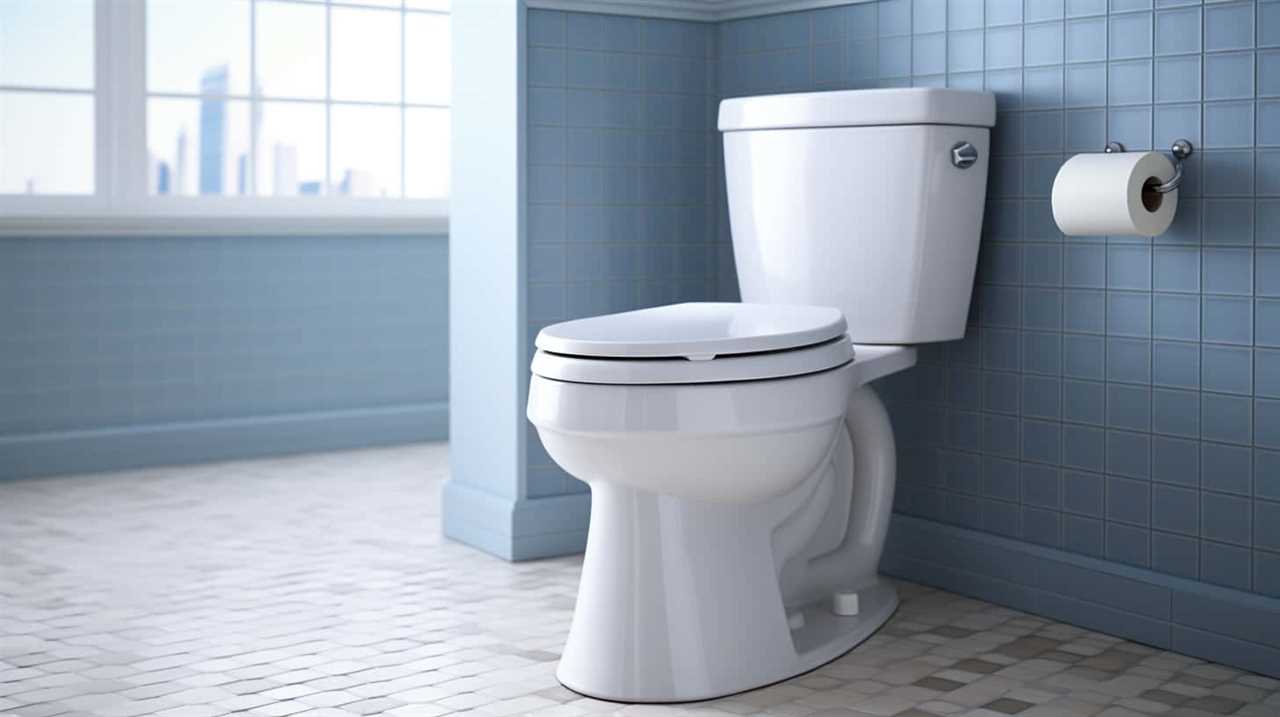
Lastly, it’s crucial to avoid flushing other non-flushable items like wipes, cotton balls, or dental floss, as these can also lead to clogs and plumbing issues.
Solutions for Dealing With a Flushed Tissue
One solution for dealing with a flushed tissue is by using a plunger to try and dislodge it. Here are some alternative options and tips for proper disposal:
- Plumbing snake: A plumbing snake can be used to reach deeper clogs and break up the tissue.
- Hot water and dish soap: Pouring hot water mixed with a few drops of dish soap down the toilet may help dissolve the tissue.
- Enzyme-based drain cleaner: These cleaners contain bacteria and enzymes that break down organic matter, including tissue.
- Wet/dry vacuum: If you have access to a wet/dry vacuum, you can use it to suck out the clog.
- Call a professional: If your attempts fail or if you’re unsure about handling the situation, it’s best to call a professional plumber.
Frequently Asked Questions
Can Flushing Tissues Down the Toilet Cause Damage to the Sewage System?
Flushing tissues down the toilet can cause damage to the sewage system and have a negative environmental impact. Sewage system maintenance is crucial to prevent clogs and blockages that can lead to costly repairs.
What Should I Do if I Accidentally Flush a Tissue Down the Toilet?
If we accidentally flush a tissue down the toilet, we should not panic. Instead, we should consider alternative disposal methods like throwing it in the trash. Flushing tissues can lead to clogs and potential damage to the sewage system.

Can Flushing Tissues Down the Toilet Lead to Costly Plumbing Repairs?
Flushing tissues down the toilet can result in costly consequences and potential plumbing mishaps. It’s important to be aware of the potential damage and take precautions to avoid such accidents.
Are There Any Alternative Methods to Dispose of Tissues Instead of Flushing Them?
When it comes to disposing of tissues, there are alternative methods available. Biodegradable tissue options and composting tissues are sustainable ways to reduce waste and minimize the risk of clogging your plumbing.
How Can I Avoid Accidentally Flushing Tissues Down the Toilet in the Future?
To avoid accidentally flushing tissues down the toilet in the future, we can learn proper ways to dispose of them. This not only prevents clogged pipes but also reduces the environmental impact of flushing tissues.
Conclusion
In conclusion, flushing tissues down the toilet can lead to potential clogs in the plumbing system and increase the risk of toilet backups. To prevent tissue flushing accidents, it’s important to dispose of tissues properly in a waste bin.

If a tissue is accidentally flushed, it’s recommended to contact a professional plumber to resolve the issue. Remember, even a small tissue can cause significant plumbing problems.
